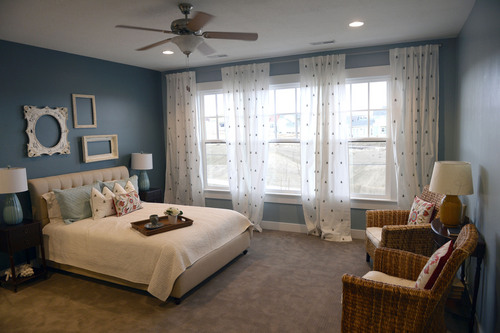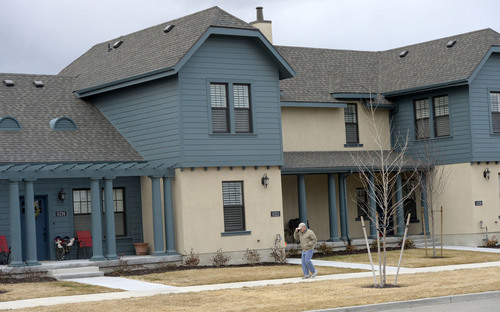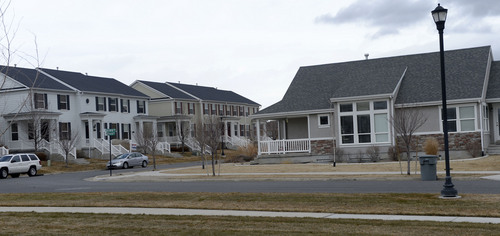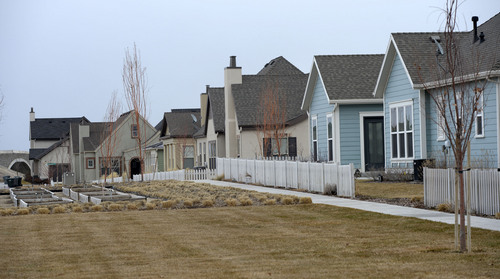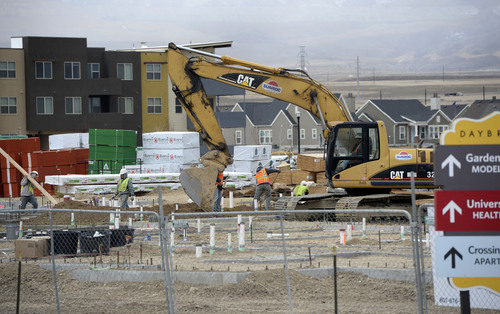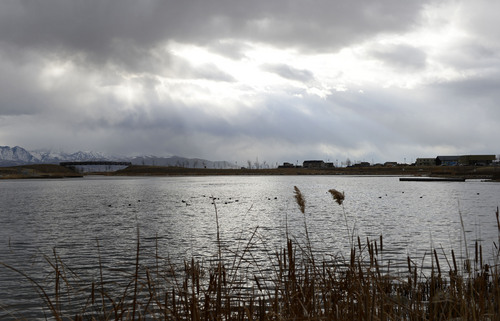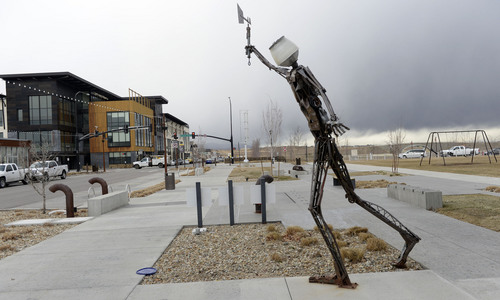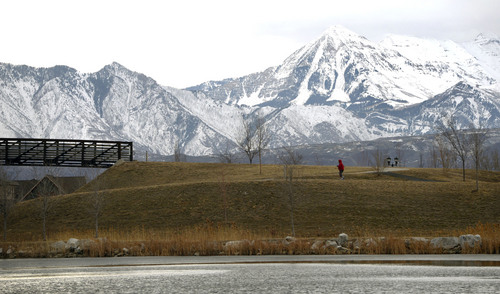This is an archived article that was published on sltrib.com in 2014, and information in the article may be outdated. It is provided only for personal research purposes and may not be reprinted.
South Jordan • Housing is certainly not business as usual for Utah's best-known mining company.
Daybreak, Kennecott Utah Copper's residential development in South Jordan, is unique in the global portfolio of its parent corporation, Rio Tinto, a natural-resources giant with operations across four continents.
Company officials say none of Rio Tinto's vast global holdings is devoted to residential use on a scale akin to Daybreak, parts of which are located on a recovered mine waste site.
The placid, park-heavy community 25 miles southwest of downtown Salt Lake City is built according to a comprehensive set of principles centered on carefully mapped-out neighborhoods, higher-density housing, conservation, open space, mass transit, walking over driving and a overall reduced impact on the environment.
Rio Tinto holds up Daybreak as a showcase of what it sees as its worldwide emphasis on sustainability.
"It is a shining example of what can be achieved with post-mining land use," said Kyle Bennett, a top Kennecott spokesman.
But to others, the project is another sharp contrast for Kennecott, whose mine operations centered in Bingham Canyon are a significant source of health-eroding air emissions that make up the region's winter inversions.
John Prehn, a retired immunology researcher living in Salt Lake City, is not alone among Utahns who see a deep contradiction in Kennecott's dual roles as a major industrial polluter and a proponent of wise land development.
"They sound very responsible, but when you look into the variety of pollutants that come out of their operations, it's pretty horrendous," said Prehn, who has sought to draw special attention to Kennecott's emissions of heavy metals such as lead. "This alone makes a housing project downwind of the mine untenable for a civilized society."
As the Wasatch Front debates air quality after some its worst inversions in recent years, the Daybreak master plan is being studied by other cities, especially those in Utah's most populated areas.
Their thinking: With cars, homes and buildings accounting for some of the biggest shares of polluting emissions, the region needs tools for reducing urban sprawl and making houses energy efficient.
But that trend has emerged alongside a hotly contested dispute and evolving perceptions about responsibility for the region's pollution.
The state Division of Air Quality (DAQ), for example, has come under intense criticism for estimates that peg industry's share of key emissions — including fine particulates, known as PM2.5 — as low as 11 percent of the total pollution load floating in Utah's wintry air.
At the same time, some DAQ studies pin more than half the Salt Lake Valley's pollution on automobiles and as much as a third on homes, buildings and small businesses.
"We're being told that we're the problem," said Michael Woodruff, an emergency-room doctor and member of Utah Physicians for a Healthy Environment. "And while that's true to a certain extent, and we all need to own that, it is not as it seems."
The diminished share laid at industry's door, Woodruff and other activists say, minimizes the threat posed by what the heaviest commercial polluters emit.
State regulators, meanwhile, say that focusing on industrial pollution sources such as Kennecott and the region's power plants and oil refineries risks shifting attention away from a more productive public debate.
"People are going to do less on their own if they can blame somebody else," said Bryce Bird, director of Utah DAQ. "Without changes to our driving habits, mass transit and shifts in travel lifestyles, we aren't going to solve this problem."
Twitter: @Tony_Semerad —
Daybreak: Answers to air pollution?
Daybreak is a residential and mixed-use development in South Jordan, built on a restored mine waste site by Kennecott Utah Copper in Salt Lake County's southwestern corner, at the foot of the Oquirrh Mountains. Begun in 2004, Daybreak follows a master plan for sustainable land use, conservation and energy efficiency, intended as a model for growth challenges faced along the Wasatch Front. —
Join the conversation
The Salt Lake Tribune seeks your input on stories about Daybreak and the lessons Utah can learn from it regarding air quality.
We're interested in your views on aspects of the South Jordan community and your neighborhood, how best to address industrial vs. personal pollution sources on the Wasatch Front, as well as ways to reduce urban sprawl.
This story focuses on Kennecott's role, comparing the polluting role of its mine operations with the potential solutions offered by its Daybreak residential development. Other stories this week have dealt with how housing and neighborhood designs can reduce the need to drive and the role of energy-efficient homes.
What are your ideas for addressing Utah's air-quality problems? Share comments, insights and experiences by emailing utairquality@sltrib.com. Please include your name and contact information.


